|
|
||
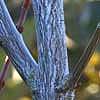 |
ACER
x conspicuum 'Candy Stripe' A new selection that is thought to be a hybrid between Acer capillipes and Acer pensylvanicum. Smaller growing than some of the Snakebark species, this has a chunkier, more uprigh habit that makes a wonderful tidy and symmetrical plant, even in our exposed conditions. The dramatic winter bark has a dark purple background, heavily striated with white, whilst the young shoots are a rich reddish purple. 5m. See it growing at the top of our Quarry Garden and in the Winter Garden. |
|
|
|
||
 |
ACER
x conspicuum
'Elephant's Ear' When you see the leaves on a strong-growing plant, the reason for the name is obvious! Up to 30cm long and 20cm wide! Lovely golden yellow autumn colour. 8m. However, the bark is not as vividly coloured as many in the group, and the canopy rather wide and lax, so it is something that we rather seldom propagate. |

|
|
|
||
| ACER x
conspicuum 'Mozart' See Acer pectinatum 'Mozart' |
||
|
|
||
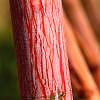 |
ACER
x conspicuum 'Phoenix' The amazing winter bark colour is a bright orangey-pink with pure white stripes and never fails to attract comment. Autumn colour is bright yellow, though it does tend to lose its leaves early in the autumn. Avoid too wet or enclosed a site to minimise the risk of fungal problems in winter. As with so many plants, adequately moist in summer but well drained in winter is the key to success. 3m. Not always the easiest of plants to grow, it can be particularly slow initially, so it establishes well as larger specimens. See it growing in our extensive Gardens. |
|
|
|
||
 |
ACER
x conspicuum 'Red
Flamingo' I will run out of superlatives describing this recent introduction. Few people walk past it without comment...it is so eye-catching at any time of year; whether the vivid pink variegated leaves in spring or the incredibly vibrant red stems in winter. But the most amazing thing is that it appears to be totally hardy and is growing perfectly happily for us in full sun, in a site that can catch the wind. Truly an incredible plant, but no shrinking violet, that's for sure! |
|
|
|
||
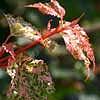 |
ACER
x conspicuum
'Silver Cardinal' This Snakebark has incredible pink and cream variegated foliage, highlighted by the red petioles and young stems. It occurred as a chance seedling of A. pensylvanicum and received an Award of Merit in 1985. Our stock is directly derived from the original seedling in the Windsor Great Park. It develops an attractive weeping head. Unless your soil is very good, it is safest in dappled shade, though having said that ours are thriving in the open here, with the plant in the arboretum becoming large enough to see from quite a distance! It is also noticeable how late in the season this one retains its foliage. 3m. As with 'Red Flamingo' above and so many trees perceived to be more "difficult", the issue is in establishing young plants that have been growing under protection. These move superbly as more mature plants rootballed from the open ground. See it growing in our Woodland Walk. |
|
|
|
||
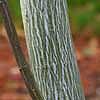 |
ACER
x conspicuum
'Silver Vein' A hybrid between A.davidii 'George Forrest' and A.pensylvanicum 'Erythrocladum' found at Hilliers about 1960. If you have the room, it is a specatular classic snakebark with great colour from its rich purple and white striped winter bark. 5m. |
|
|
|
||
|
ACER crataegifolium 'Veitchii'
I was amazed to discover that this gorgeous plant has been around since 1881! It forms a dense small tree-like shrub to 2.5m. The small leaves are delightfully variegated pink and cream. It also boasts wonderful deep pink autumn colours. As with most variegated Acers, avoid lunchtime sun in the summer if possible. 2m. Rarely available. |
||
|
|
||
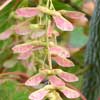 |
ACER davidii A delightful tree noted for dazzling autumn colour and attractive white striped, purple bark in winter. It flowers and fruits more reliably than many too, which just adds to its considerable attraction. Wonderful gently arching habit. Choose from the cultivars listed below which allow you to select for a particular feature. |
|
|
|
||
|
ACER davidii 'Cantonspark' A tall and slender, upright selection perfect for smaller gardens, with slightly smaller leaves too. This one has the greenest bark of the cultivars in our collection, though it still sports the famous white striations. See it in the Winter Garden. |
||
|
|
||
|
ACER davidii
'George Forrest' |
||
|
|
||
|
ACER davidii
'Karmen' |
||
|
|
||
| ACER davidii
'Mozart' See Acer pectinatum 'Mozart' |
||
|
|
||
| ACER davidii
'Purple Bark' This Dutch selection from 1988 is derived from the subspecies Acer davidii ssp. grosseri, which explains the characteristic three-lobed leaves. More compact than most snakebarks, this most closely resembles 'Candy Stripe', being of similar symmetrical and tidy habit. The white-striped purple bark is as beautiful as any in winter. See it growing in our Winter Garden. |
||
|
|
||
| ACER davidii
'Rosalie'
I very much like this relatively recent (1985) Dutch cultivar; in fact it's one of our favourites. The young growth opens a delightful chocolate colour, eventually maturing to green, but initially contrasting superbly with the delightful hanging racemes of pale coloured flowers. Although the bark is a pleasant green with white striping in summer, it really comes into its own in winter when it turns a rich reddish-lilac colour, highlighting the white striations. This has characteristics in common with 'Karmen', both of them having a distinctive habit in this group; more open and airy, more graceful than many of the others. See it in the Maple Glade. |
||
|
|
||
| ACER davidii
'Serpentine' To my mind one of the most graceful of the snakebarks with smaller leaves and free-branching, gently arching habit. Seeds are freely produced, creating a very attractive contrast. Wonderful orange autumn colours. See it in the Woodland Walk. |
||
|
|
||
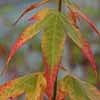 |
ACER
elegantulum
This very rare Chinese species sits here purely by virtue of alphabetical order - it is not a snakebark! However, it is a very beautiful small tree of great elegance, as the name suggests! The rich green leaves are flushed with bronze on opening and give lovely yellow and orange autumn colours. The stems are a bright green and noticeable in winter. We rarely propagate this one. |
|
|
|
||
|
ACER forrestii
'Alice' |
||
|
|
||
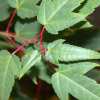 |
ACER forrestii 'Sparkling' This delightful form has become a firm favourite though it seems oddly more difficult to propagate. Its habit is fundamentally upright and sturdy, yet elegant at the same time. The young growth has a coppery tinge that gives an almost metallic sheen. Summer colour is green, whilst autumn colours are again outstanding in shades of orange and red. The bark visibly changes colour as winter arrives to give rich deep red shades. See it in the Winter Garden. |
|